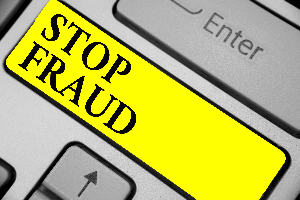
COVID-19 continues to dominate headlines—in more ways than anticipated. While cybercriminals are always looking for ways to scam victims, pandemics provide additional opportunities for fraud. As people are spending more time than ever on their smart phones, iPads, and computers for work, shopping and entertainment, cybercriminals are ramping up their activities and getting more creative with their methods of hacking unsuspecting victims.
According to the Federal Trade Commission (FTC), scammers are using COVID-19 to further target consumers and businesses alike. They’re setting up websites, contacting people by phone and email, and posting dishonest information on social media platforms. Being aware of the different types of scams out there is the first step in protecting yourself, your business and your employees. Knowing how to handle those scams can save you a great deal of headache down the road.
The following are some examples of scams linked just to COVID-19:
Take the following precautionary measures to protect your organization and its employees from known and emerging scams:
With so many people working remote, hackers are looking for companies to drop their defenses, making it easier to infiltrate networks. When people are aware of what scams are out there, they are much less likely to fall for them. Talk about the risks with your management team, create a simplified outline of what to look for, and how to respond and relay to your entire staff.

UST maintains a secure site. This means that information we obtain from you in the process of enrolling is protected and cannot be viewed by others. Information about your agency is provided to our various service providers once you enroll in UST for the purpose of providing you with the best possible service. Your information will never be sold or rented to other entities that are not affiliated with UST. Agencies that are actively enrolled in UST are listed for review by other agencies, UST’s sponsors and potential participants, but no information specific to your agency can be reviewed by anyone not affiliated with UST and not otherwise engaged in providing services to you except as required by law or valid legal process.
Your use of this site and the provision of basic information constitute your consent for UST to use the information supplied.
UST may collect generic information about overall website traffic, and use other analytical information and tools to help us improve our website and provide the best possible information and service. As you browse UST’s website, cookies may also be placed on your computer so that we can better understand what information our visitors are most interested in, and to help direct you to other relevant information. These cookies do not collect personal information such as your name, email, postal address or phone number. To opt out of some of these cookies, click here. If you are a Twitter user, and prefer not to have Twitter ad content tailored to you, learn more here.
Further, our website may contain links to other sites. Anytime you connect to another website, their respective privacy policy will apply and UST is not responsible for the privacy practices of others.
This Privacy Policy and the Terms of Use for our site is subject to change.
UST maintains a secure site. This means that information we obtain from you in the process of enrolling is protected and cannot be viewed by others. Information about your agency is provided to our various service providers once you enroll in UST for the purpose of providing you with the best possible service. Your information will never be sold or rented to other entities that are not affiliated with UST. Agencies that are actively enrolled in UST are listed for review by other agencies, UST’s sponsors and potential participants, but no information specific to your agency can be reviewed by anyone not affiliated with UST and not otherwise engaged in providing services to you except as required by law or valid legal process.
Your use of this site and the provision of basic information constitute your consent for UST to use the information supplied.
UST may collect generic information about overall website traffic, and use other analytical information and tools to help us improve our website and provide the best possible information and service. As you browse UST’s website, cookies may also be placed on your computer so that we can better understand what information our visitors are most interested in, and to help direct you to other relevant information. These cookies do not collect personal information such as your name, email, postal address or phone number. To opt out of some of these cookies, click here. If you are a Twitter user, and prefer not to have Twitter ad content tailored to you, learn more here.
Further, our website may contain links to other sites. Anytime you connect to another website, their respective privacy policy will apply and UST is not responsible for the privacy practices of others.
This Privacy Policy and the Terms of Use for our site is subject to change.